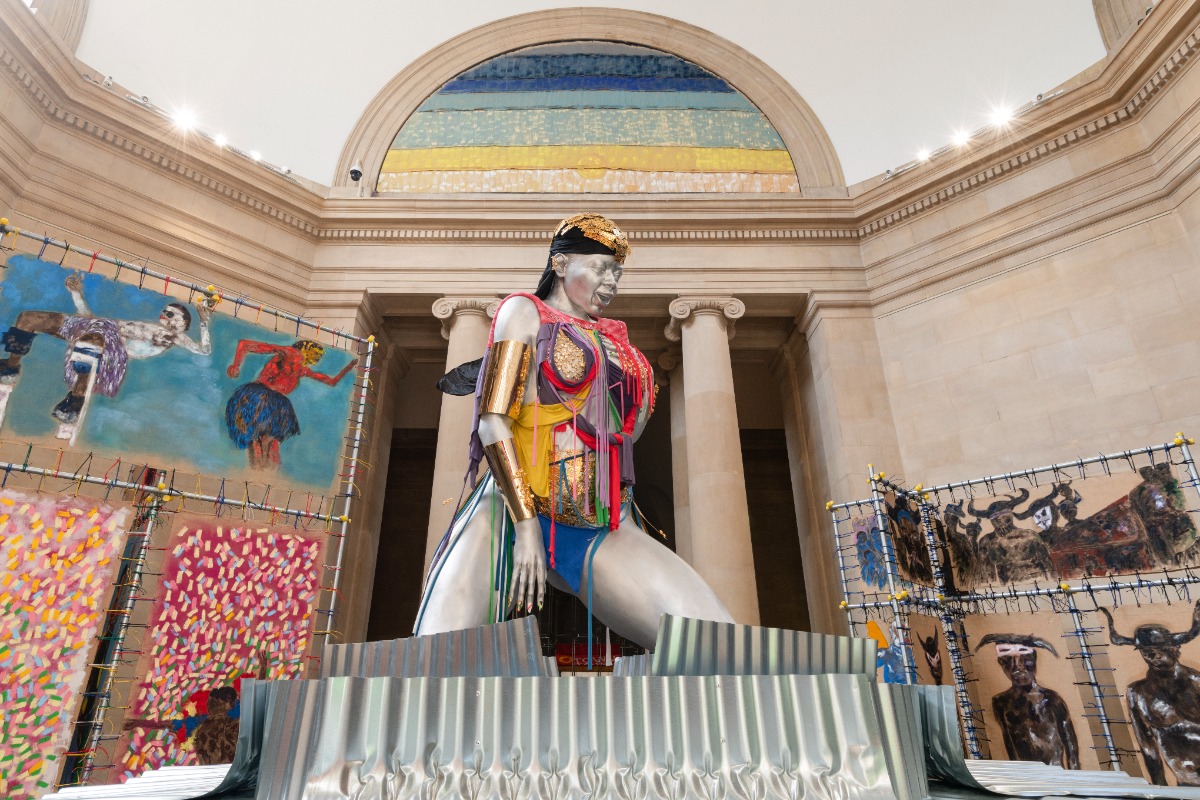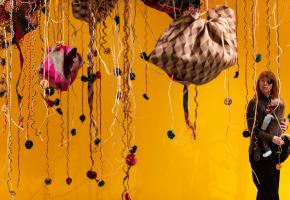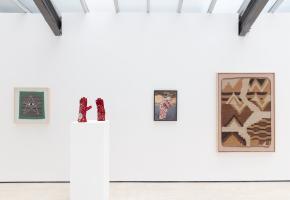Setting up shop in the iconic, neoclassical setting of the Duveen Galleries, Barrington has a lot to reckon with. Dominique Heyse-Moore, senior curator of contemporary British art at the Tate Britain and lead curator of this particular commission, describes the “heavy history” at the Tate, an institution which fundamentally cannot be detached from the British Empire and colonial slavery. In recent years, the Tate has become more actively engaged in and transparent about this legacy, working with historical researchers at the Centre for the Study of the Legacies of British Slave-ownership at University College London and constructing a joint statement addressing both what is known and what is not about the gallery’s associations with the slave trade. A shift is underway, as the Tate begins to grapple with the bones upon which it is built.
As an artist born to Grenadian and Haitian parents in Venezuela, raised between Grenada and New York and eventually based professionally in London, Barrington is well acquainted with diaspora. He exists across cultures and continents, and has had a life full of journeys that has led him to precisely the moment in which he finds himself now.
The space is structured to reflect this movement. Accessible from various different points in the gallery, the physical configuration of the installation creates a kind of triangulation that speaks not only to the Black Atlantic connections between Barrington’s key locations of Great Britain, the USA and the Caribbean, but also to a past, present and future that can and must be accessed from a multitude of distinct, coexisting perspectives. In the words of Heyse-Moore, “there are different ways in; you don’t have to start at the beginning, and walk along it like a corridor until the end, but you could enter from any point, and that is the complexity of that history, and how it cuts through our lives as people from the Caribbean diaspora, as Alvaro, Hannah [Marsh, Assistant Curator] and I are.”
Within the context of a consciousness of colonialism is a specific engagement with British art history, as Barrington interrogates his own position within it. As described by Heyse-Moore, “more than any other artist I’ve worked with before, he’s talked about what’s on display in the rooms surrounding [his installation]”. In his opening words, Barrington references the influence of Rothko and Turner. But he also stretches beyond the classics of the canon for some more niche inspiration, such as “The Cholmondeley Ladies”, an early 17th century work by an unknown artist displayed in one of the Tate’s surrounding rooms - and, by design, practically visible from certain vantage points in the Duveen Galleries. “We’re encircled by 500 years of British art history, and it’s not a coincidence that that maps on to the British colonial period”, explains Heyse-Moore. “Every room - every gallery in the Tate Britain - is connected to this commission.”

But whilst his work spotlights this context, Barrington’s installation is, at its absolute core, about joy. “At the heart of this is carnival”, says Heyse-Moore, and it’s true - central to the space is a towering sculpture of a jubilant, dancing woman. Based on Barrington’s close friend Samantha, this figure embodies carnival culture, “now a global diasporic phenomenon”. The space is bright and colourful and, with the help of delighted onlookers and communal steel drums, full of noise. “The Duveens finally being peopled is what activates the work,” says Heyse-Moore. “There isn’t a strict division between visitor, audience and artist in this case, and that’s true of carnival culture. The revellers — the masqueraders — are carnival. [It is] an incredibly participatory and collaborative practice.”
And, for Barrington, forever entangled in this joy are the three Graces for whom his exhibition is named and created: his grandmother Frederica, his aforementioned friend and sister-figure Samantha, and his mother Emelda. This space has become an ode to them. He recreates the plastic-covered furniture he so fondly remembers from Frederica’s home in Grenada, he immortalises Samantha’s infectious abandon in four-metre high aluminium, he reflects Emelda’s fears during an epidemic of police violence and a “war on drugs” in New York that left both mother and son so vulnerable. As always, the personal is political: Barrington embraces the individual, pivotal details of his own life and in doing so speaks to a vast diasporic community across generations.



















